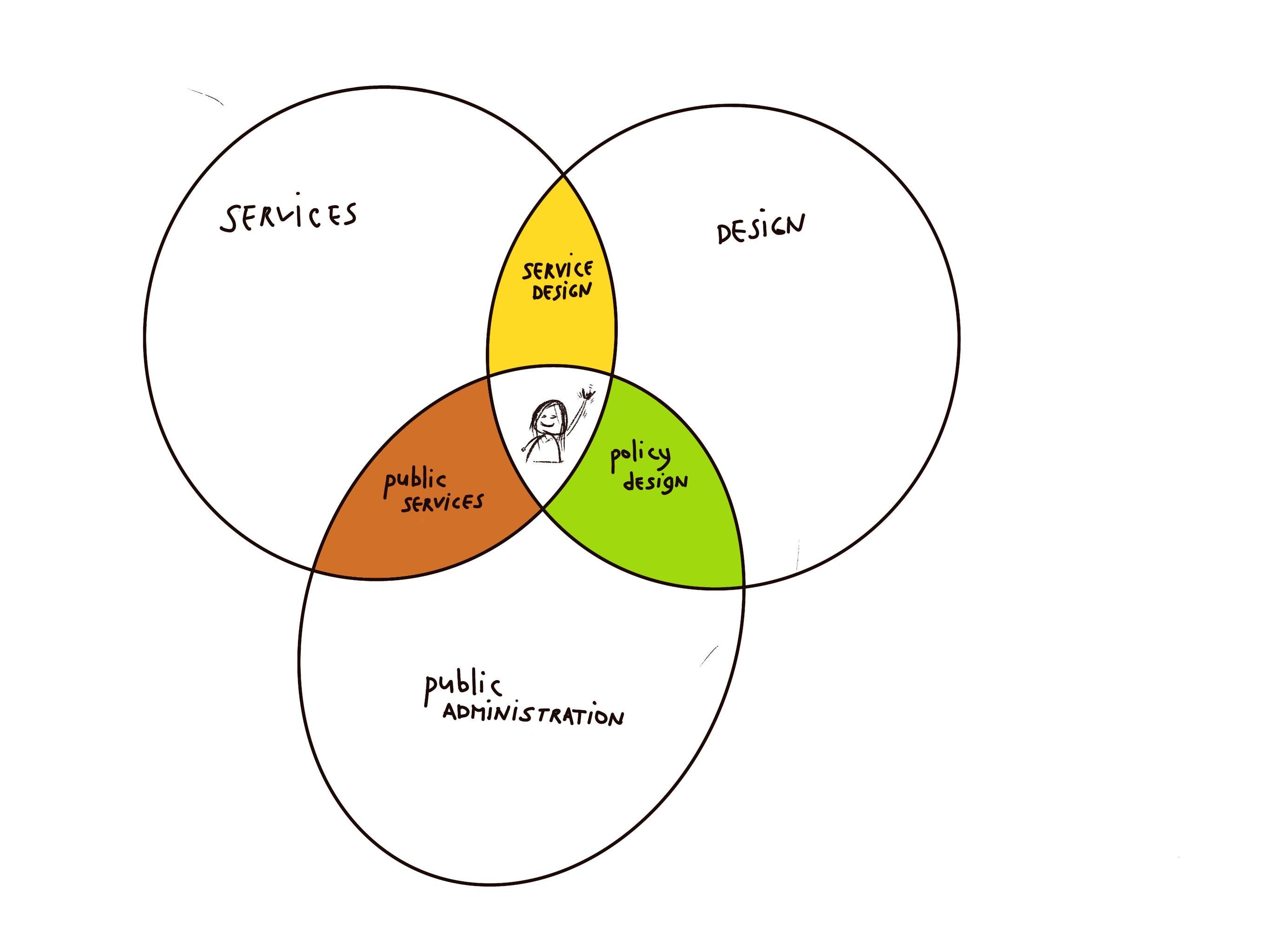If you follow me on Instagram, you will see that for the past few months I have been sharing almost only ‘reading views’. I love reading, I even took a speed reading course when I started my PhD, but reading academic literature (for the first time in your life) and finding structure in what you read, that’s something else.
In this blog, I will give an update on all this reading and a first attempt at that structure, or, what we also call: the fuzzy front-end of research. With reading tips for you of course!
Parallel disciplines
When I started this PhD research, I knew I wanted to look from two disciplines: design and public administration. Later, a third was added: services. Because I keep hopping between areas of research, it sometimes feels a little unsteady for me. Now how does this belong together? From what lens will I now examine? Should I actually choose one or can I combine them? And how do you know when you have everything?
With each discipline, I am in contact with an academic institute.
- Design is of course my home base, Industrial Design at Delft University of Technology.
- At CTF at Karlstad University, where I regularly work for a week, they know all about services.
- And I ‘flirt’ a bit with the USBO (Faculty of Public Administration) of Utrecht University and the Faculty of Administrative Law of the University of Groningen.
I see more and more clearly where these areas overlap. Fortunately, plenty has been written about those crossovers as well.

Designing services: service design
This is, of course, a bit of a home game. This blog is full of all kinds of methods, case histories and also a bit of theory on how to design services, how to test them with users, and how to include your organization. In the blog “The Structure of Research”, for example, I summarized 99 blogs about our design research team at the Executive Agency of Education and how we proceeded.
It is a feast of recognition to dive into the literature on this topic. Most of what I learned in practice helps me so reading about it instantly clicks. If you like to brush up on some theoretical background as well, here are a few of my favorites:
- Usability engineering by Jakob Nielsen from 1985, classic!
- Frame innovation by Kees Dorst, 2015. The first design book I ever read: 5 stars.
- The Service Design Network: not a book, but an interactive network with many resources, by founder Birgit Mager.
- This is service design by Marc Stickdorn from 2011.
- And my favorite book: Good services by Lou Downe from 2019.
Where government and service research overlap
At the Fronteers in Service conference in June, I realized that the services field is quite commercial. It is also a subfield of Marketing, so that makes sense. Still, there is a “public services” branch. In January, I was at CTF to learn more about services, and was put on the trail of public service logic:
- After the visit, I wrote the blog: welcome to the academic world of government services.
- as a thought experiment, I then wrote “The value is in the classroom” where I tried out the service-dominant way of thinking on my organization and education services.
An important part of combining these two fields of study is that I properly define what “public service” is. I want to do that by reading more about public value and how it is viewed. Next, I want to look at what government service within the large rubric of public service means. And so I will also have to define what a public service provider is. This is what I will be working on this fall.
Design in government
I discover that there are two major streams here:
- policy design: designing policy. For example, what the Danish Design Center like Christian Bason writes about it in 2017’s Leading public design.
- service design in government: designing government services. For example, Digital transformation at scale, why the strategy is delivery by Andrew Greenway from 2018 who describes from the UK government how they go about creating (often digital) services.
I find that second movement particularly interesting, but realize that I overlap with policy design and must relate to it. In the Netherlands, policy and implementation/ service delivery is quite separated at the national level, but in other countries (or in our local governments) this is much less the case.
I also enjoy reading about the rise of service teams in government, internationally. And I want to know what they are up against and what has helped them make government services that are good for people. So I also cannot escape delving into organizational dynamics and growth.
But first: what is the next step?
The above exploration and all these reading views will have a place in my second article. With this conceptual piece, I will give the rest of my research a good framework, I will have some working definitions which help me be clear and unambiguous, and all of that together can later nicely be the second chapter of the dissertation.
Do you enjoy following this research? Subscribe to my monthly newsletter.
